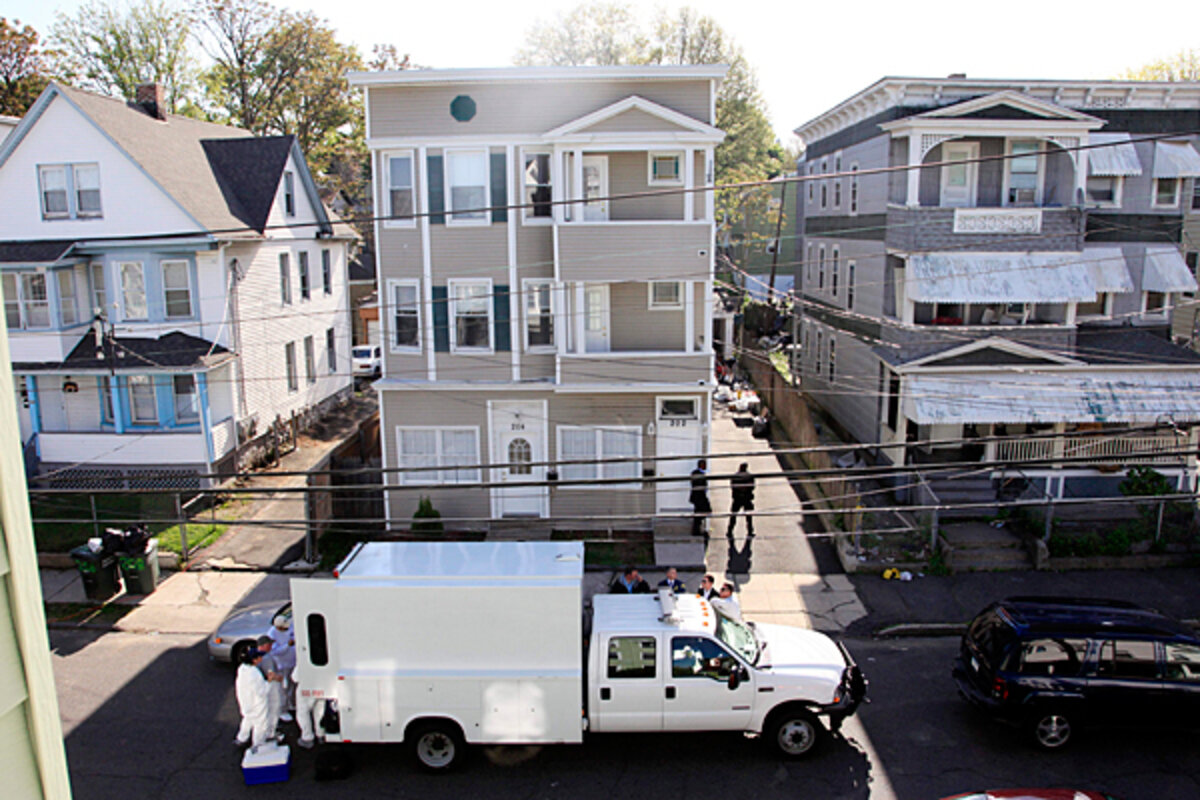Times Square bomb: Did Pakistan Taliban send its 'C' team?
Loading...
| Washington
Faisal Shahzad, the suspect in the Times Square bombing case, trained in Pakistan with the Taliban, according to US officials. “I am comfortable in saying that they were involved in what Shahzad tried to do,” said Attorney General Eric Holder in an NBC interview broadcast Sunday.
But if Mr. Shahzad did attend a jihadist academy in South Waziristan, or some other remote Pakistani region, why wasn’t he a better bomb maker?
Shahzad’s explosive device appears to have been odd, and amateurish. Yet the Taliban’s basic field manual has two chapters on explosives and addresses everything from the correct creation of detonators to the exact chemical compositions required for homemade bombs.
It’s possible that Shahzad was not able to obtain the necessary components for a better bomb, due to federal restrictions. It’s also possible that worldwide counterterrorism efforts are having an effect.
“This may suggest we are moving from the ‘A’ team in recruits to the ‘B’ team or even the ‘C’ team,” says William Martel, an associate professor of international security studies at the Tufts University Fletcher School of International Affairs.
There is still much to be learned about the Times Square incident, in which Shahzad’s vehicle bomb smoked and burned, but did not explode.
According to law enforcement officials, the bomb was made of fireworks, gasoline, propane tanks, and fertilizer. While these substances are flammable and dangerous in their own right, they are not typical bomb components, with the exception of fertilizer. For ammonium nitrate fertilizer to become a powerful explosive, it must be mixed with fuel oil – a step Shahzad reportedly had not taken.
Shahzad himself was far from an uneducated foot soldier. He was raised in Pakistan in affluent circumstances, and earned a college degree in the US after arriving in 1999 on a student visa. He has traveled back to Pakistan numerous times since moving to America – most recently in July, 2009.
US officials say Shahzad is providing them with information – which may be the basis for their confident assertions linking him to the Pakistani Taliban.
“This is a group that is closely allied with Al Qaeda … it is dedicated to the same type of agenda that Al Qaeda has, which is a murderous one,” said Deputy National Security Adviser for Counterterrorism John Brennan on CNN.
The Taliban’s main training manual appears to be the 158-page “Military Teachings for the Preparation of Mujahidin”, which is posted on jihadist web sites.
“The detailed manual contains information and diagrams of various small-arms, ammunition, light and heavy weaponry, communication tools, and chemical and explosives formulas,” noted a September, 2008 analysis of the manual in CTC Sentinel, a publication of the Combating Terrorism Center at the US Military Academy at West Point, New York.
The manual’s chapter nine provides “details on primary, secondary and compound explosives”, wrote Pakistani terror expert Imtiaz Ali in the CTC Sentinel.
In addition, it outlines the exact chemical make-up for homemade bomb, down to the required amounts of specific chemical agents. A subsequent chapter provides instructions on proper handling of volatile substances.
Did Faisal Shahzad not learn from this manual – which is widely distributed in the region, and available on jihadist web sites? Was he not able to recreate its teachings? The apparent disconnect between his training and his performance is something of a mystery.
Bomb making might not have been the only area in which Shahzad fell short, after all. Reportedly, he also left the keys to his apartment in the SUV that he was trying to blow up in Times Square.
Constant pressure from drone attacks in Pakistan, combined with heightened awareness in the US and Western Europe, may be driving Al Qaeda, the Taliban, and other loosely linked Islamist groups which wish to strike outside the Middle East to relying on numerous individuals as opposed to better-planned conspiracies, according to Mr. Martel of the Fletcher School.
“It’s possible this means there is much less effective quality control on the organization and training of terrorist attacks,” he says.
Related:




